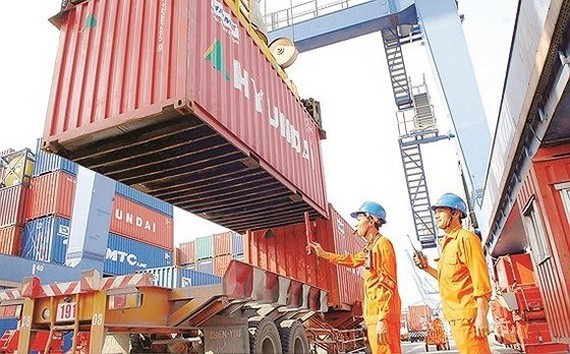
Statistics from the Ministry of Industry and Trade reveal that in the first 8 months this year, Vietnam spent nearly US$247 billion to import goods (a rise of 13.6 percent compared to this time last year), meaning the national economy is recovering impressively.
The sad news is many domestic businesses are facing expensive imported materials as well as disruptions in their supply chains due to negative geo-political issues in the world. Also, the continuous rising USD exchange rate exaggerates material price increases, directly affecting production costs.
Therefore, it is advisable to devise practical measures to avoid the negative impacts of disrupted supply chains or expensive import materials to increase the competitiveness.
One feasible solution is to switch to the materials that can be bought domestically like fertilizers, animal feed. Another possible measure is to diversify markets to avoid too much dependence on a limited number of material suppliers.
One important factor to consider is the current trend of supply chain shift in the world after the commercial war between the US and China as well as the Covid-19 pandemic. Thanks to the advantage of cheap labor and a series of Free Trade Agreements (FTAs), Vietnam is becoming an attractive destination of many FDI businesses and giant corporations as we committed to a roadmap for tax reduction.
It is estimated that about 15-20 percent of the global supply chain will move to Vietnam, India, the Philippines, Myanmar, Bangladesh, and Cambodia. The Vietnam Textile and Apparel Association forecasts a major investment shift to the country by 2025. This is a valuable chance for the nation to welcome the FDI capital in the industries of textile and garment materials, footwear, electronics, spare parts, machinery and equipment, leading to a gradual independence from imports.
In order for Vietnam to be an ideal destination of various supply chains, the Government should flexibly adjust current policies and boost the national potential, improve existing infrastructure, especially the traffic one. In addition, it should restructure the national economy for a more sustainable growth, reduce dependence on other countries and outsourcing activities for export.
It is better to boost production in key export areas, restructure supportive industries so that domestic production is more active in material supply, which in turn reduces dependence on imported materials, especially from China.
Simultaneously, Vietnam should focus on attracting quality FDI and stop any movements that have negative impacts on the national economy. Cooperative projects with domestic businesses should be encouraged to increase the localization rate, prevent the transfer of outdated technologies which are harmful to the environment.
























